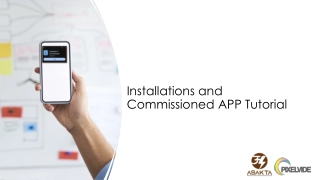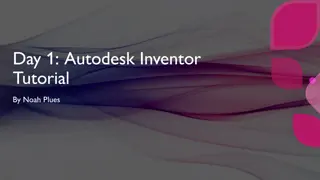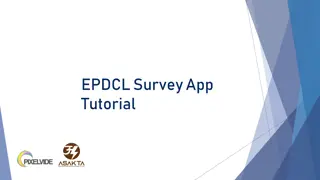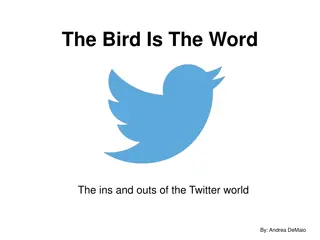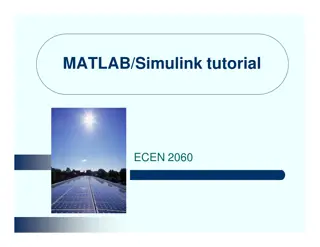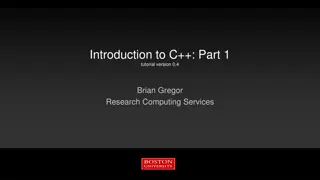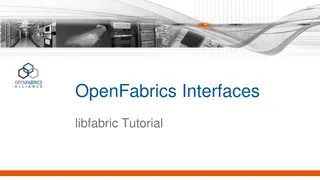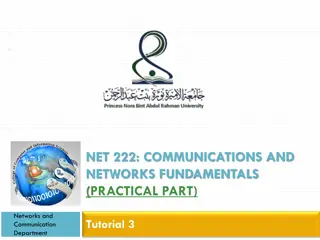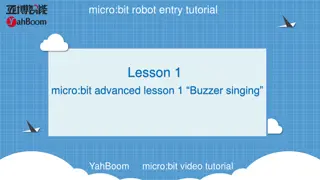
Internet Infrastructure: An Overview
Explore the fundamental concepts of Internet infrastructure, including the role of devices, servers, routers, IP addresses, and the Domain Name System (DNS). Unveil the Black Box model and discover the decentralized nature of the Internet. Dive into the world of socket programming and enhance your understanding of networking protocols.
Download Presentation

Please find below an Image/Link to download the presentation.
The content on the website is provided AS IS for your information and personal use only. It may not be sold, licensed, or shared on other websites without obtaining consent from the author. If you encounter any issues during the download, it is possible that the publisher has removed the file from their server.
You are allowed to download the files provided on this website for personal or commercial use, subject to the condition that they are used lawfully. All files are the property of their respective owners.
The content on the website is provided AS IS for your information and personal use only. It may not be sold, licensed, or shared on other websites without obtaining consent from the author.
E N D
Presentation Transcript
Tutorial on Socket Programming and More Parsa Pazhooheshy CSC 458- Winter 2025
Outline This tutorial is a gentle introduction to some different concepts that you will see through the course. You will learn more about these concepts throughout the course. This tutorial is supposed to be just a starting point. 2
Internet as a Black Box Definition The Internet is a vast, globally interconnected network that enables communication between devices (clients and servers) using standardized protocols. Facilitates seamless data exchange between clients and servers over a publicly accessible infrastructure. 3
Internet as a Black Box Characteristics Scalability & Decentralization: No single entity owns or controls the entire Internet; it is built on a distributed and scalable architecture. Packet-Switched Communication: Data is transmitted in small packets over multiple paths, improving efficiency and reliability. 4
Internet still as a Black-Box! Devices Clients: Devices (computers, smartphones, IoT devices) that request and consume data or services. Servers: Systems that provide resources, data, and services (e.g., web servers, cloud storage). 5
Internet not as a Black-Box any more! Devices Routers & Switches: Direct network traffic and ensure data packets reach their destination efficiently. 6
IP Address: The Internets Addressing System A unique numerical identifier assigned to each device on a network. Used for device identification and communication across the Internet. Similar to a home address but for digital devices. 7
Internet not as a Black-Box any more! Devices Domain Name System (DNS): When a user types a domain name into a browser, the browser sends a DNS query. A DNS server responds to the query by providing the IP address for the domain. The browser uses the IP address to communicate with the website's server. 8
Step by Step Process of a Web Request 1. You type www.example.com in your browser. 2. The DNS translates www.example.com to an IP address (e.g., 192.168.1.1). 3. Your device sends a request to the web server hosting the website. 4. The server processes the request and sends back the HTML, CSS, and JavaScript needed to display the website. 5. Your browser renders the website, and you can interact with it. 9
Recap What we have covered so far 1. Internet as a black box 2. Servers and Clients in the Internet 3. Routers and Switches 4. DNS 10
Network Socket Network sockets are application-level software implementation that enable communication between two processes over a network (which can be Internet or any other network type). It acts as a bridge between applications and the network stack, allowing processes to send and receive data. The API for the network protocol stack creates a handle for each socket created by an application, commonly referred to as a socket descriptor. 11
Function Purpose socket() Creates a new socket. bind() Assigns an IP address & port to the socket. listen() Sets up a socket to accept connections (server-side). accept() Accepts an incoming connection request. connect() Establishes a connection to a remote socket. send()/recv() Sends or receives data over a socket. close() Closes the socket after communication. 12
Typical Client Program Prepare to communicate Create a socket Determine server address and port number Initiate the connection to the server Exchange data with the server Write data to the socket Read data from the socket Do stuff with the data (e.g., render a Web page) Close the socket 13
Socket Parameters A socket connection has 5 general parameters: a. The protocol i. Example: TCP and UDP b. The local and remote address i. Example: 128.100.3.40 c. The local and remote port number i. Some ports are reserved (e.g., 80 for HTTP) ii. Root access require to listen on port numbers below 1024 15
Servers Differ From Clients Passive open Prepare to accept connections but don t actually establish one until hearing from a client Hearing from multiple clients Allow a backlog of waiting clients ... in case several try to start a connection at once Create a socket for each client Upon accepting a new client create a new socket for the communication 16
Typical Server Program Prepare to communicate Create a socket Associate local address and port with the socket Wait to hear from a client (passive open) Indicate how many clients-in-waiting to permit Accept an incoming connection from a client Exchange data with the client over new socket Receive data from the socket Send data to the socket Close the socket Repeat with the next connection request 17

